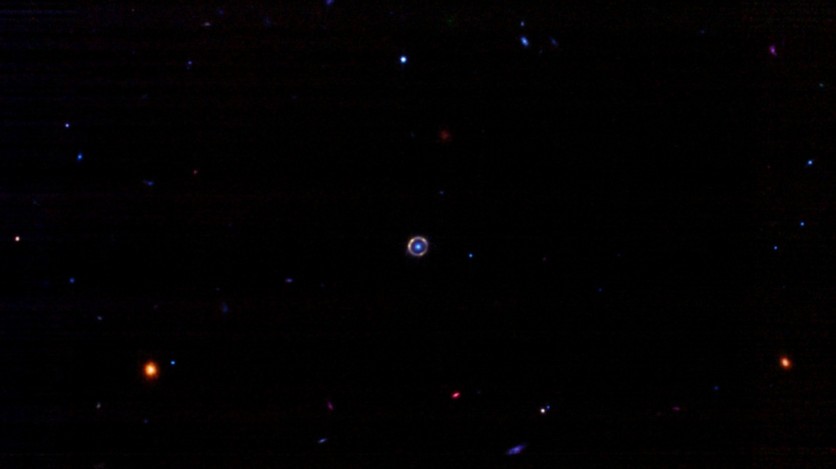NASA's James Webb Space Telescope has done its magic again after capturing a perfect image of an "Einstein ring."
According to Space.com, the breathtaking halo was created as light from a faraway galaxy passed around another galaxy that was lined up between the distant light source and Earth.
One of the most impressive representations of this phenomenon is caught is the brand-new James Webb Space Telescope image, which was produced by an astronomy fan from Reddit.

Gravitational Lensing
The galaxy SPT-S J041839-4751.8, also known as JO418 for short, is one of the oldest galaxies in the cosmos and is located around 12 billion light-years away from Earth. It is the source of the ring of light in the new image.
The intense blue light in the middle of the ring, which is another galaxy directly behind JO418, is so large that its gravitational attraction warps the space-time around it. The foreground galaxy is reached by the light from JO418 as it passes through this twisted space-time.
Although the electromagnetic waves observed here appear to have curled around the galaxy as viewed from Earth, they have actually been moving in a straight path the entire time, according to Space.com.
This strange result is comparable to how light is refracted by glass lenses. This phenomenon, like magnifying glasses, gives the impression that faraway galaxies are much closer than they are.
Researchers have given this strange phenomenon the name gravitational lensing as a result. When developing his theory of relativity in 1912, Albert Einstein made the first prediction of gravitational lensing.
Read Also : NASA's James Webb Space Telescope Sets Historic Milestone With First-Ever Image of an Exoplanet
Who Developed the Image?
On August 23, "Spaceguy44," a Reddit user and graduate student of astronomy, uploaded a picture of the JOS18 Einstein ring to the r/Astronomy forum.
Using publicly accessible data gathered by the Mid-Infrared Instrument (MIRI) on the James Webb Space Telescope, the unnamed astronomer produced the image.
Although the latest photograph is not the first to show JO418, it is by far the most detailed yet.
After observing partial gravitational lensing with the Atacama Large Millimeter/submillimeter Array (ALMA) in Chile in 2020, researchers found the far-off galaxy; they announced the discovery in a study published that year in the journal Nature.
ScienceAlert reports that although Spaceguy44 published a photograph of JO418 on August 13 using data obtained by Webb's NIRCam sensor, the initial shot had a far lower resolution and the ring of light was less noticeable.
It is worth noting that NASA's Hubble Space Telescope has also captured an Einstein ring, which was made by twisted quasar light. But it is not as complete or visible in this latest picture.
Since they require the background and distant galaxies to be exactly aligned with the observer, fully circular Einstein rings are rare to capture The more sophisticated sensors aboard Webb, though, ought to make it simpler to find them in the future.
Related Article : [LOOK] NASA James Webb Space Telescope's Largest Image of the Universe to Date - Made Out of 690 Individual Frames!
This article is owned by Tech Times
Written by Joaquin Victor Tacla
![Apple Watch Series 10 [GPS 42mm]](https://d.techtimes.com/en/full/453899/apple-watch-series-10-gps-42mm.jpg?w=184&h=103&f=9fb3c2ea2db928c663d1d2eadbcb3e52)



